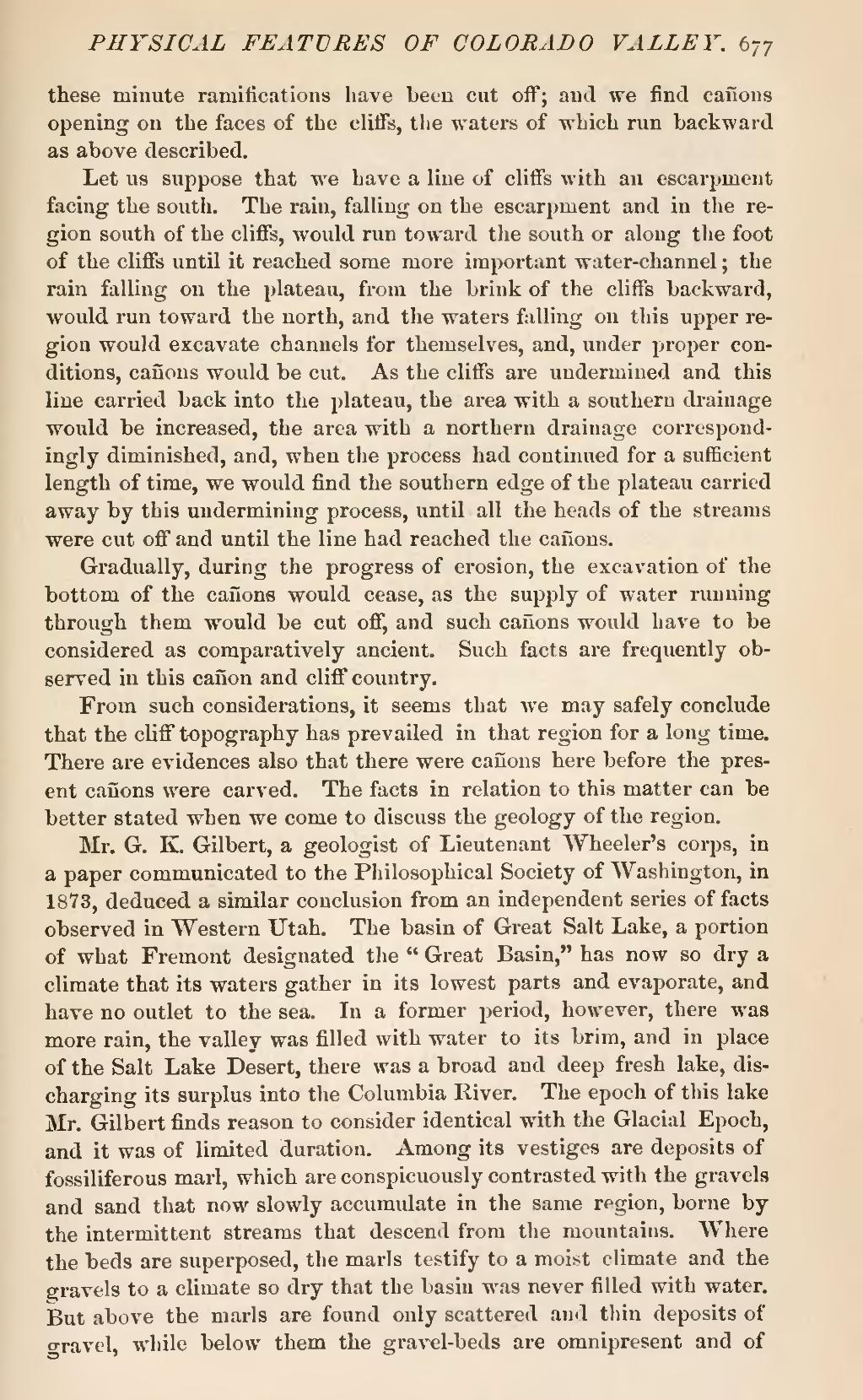these minute ramifications have been cut off; and we find cañons opening on the faces of the cliffs, the waters of which run backward as above described.
Let us suppose that we have a line of cliffs with an escarpment facing the south. The rain, falling on the escarpment and in the region south of the cliffs, would run toward the south or along the foot of the cliffs until it reached some more important water-channel; the rain falling on the plateau, from the brink of the cliffs backward, would run toward the north, and the waters falling on this upper region would excavate channels for themselves, and, under proper conditions, canons would be cut. As the cliffs are undermined and this line carried back into the plateau, the area with a southern drainage would be increased, the area with a northern drainage correspondingly diminished, and, when the process had continued for a sufficient length of time, we would find the southern edge of the plateau carried away by this undermining process, until all the heads of the streams were cut off and until the line had reached the cañons.
Gradually, during the progress of erosion, the excavation of the bottom of the cañons would cease, as the supply of water running through them would be cut off, and such cañons would have to be considered as comparatively ancient. Such facts are frequently observed in this cañon and cliff country.
From such considerations, it seems that we may safely conclude that the cliff topography has prevailed in that region for a long time. There are evidences also that there were cañons here before the present cañons were carved. The facts in relation to this matter can be better stated when we come to discuss the geology of the region,
Mr. G. K. Gilbert, a geologist of Lieutenant Wheeler's corps, in a paper communicated to the Philosophical Society of Washington, in 1873, deduced a similar conclusion from an independent series of facts observed in Western Utah. The basin of Great Salt Lake, a portion of what Fremont designated the "Great Basin," has now so dry a climate that its waters gather in its lowest parts and evaporate, and have no outlet to the sea. In a former period, however, there was more rain, the valley was filled with water to its brim, and in place of the Salt Lake Desert, there was a broad and deep fresh lake, discharging its surplus into the Columbia River. The epoch of this lake Mr. Gilbert finds reason to consider identical with the Glacial Epoch, and it was of limited duration. Among its vestiges are deposits of fossiliferous marl, which are conspicuously contrasted with the gravels and sand that now slowly accumulate in the same region, borne by the intermittent streams that descend from the mountains. Where the beds are superposed, the marls testify to a moist climate and the gravels to a climate so dry that the basin was never filled with water. But above the marls are found only scattered and thin deposits of gravel, while below them the gravel-beds are omnipresent and of

